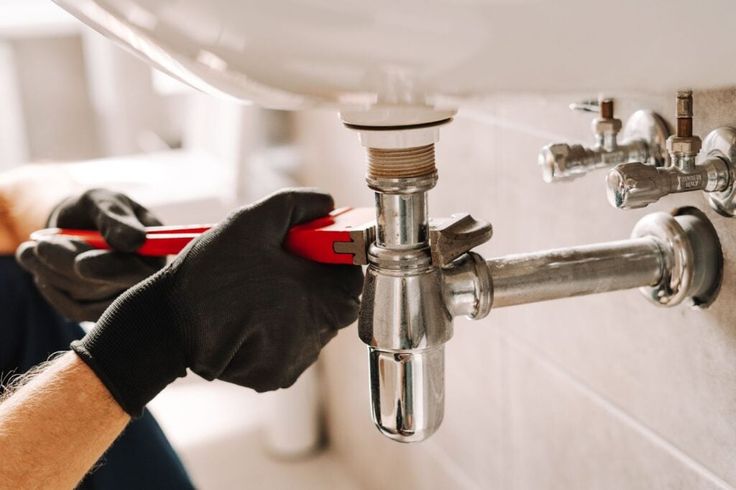In the bustling city of Miami, plumbing problems can arise unexpectedly, turning what seems like a minor inconvenience into a major headache. Whether it’s a leaky faucet, a clogged toilet, or low water pressure, these issues can disrupt daily life. Fortunately, there are quick fixes for common plumbing problems that can help you get back on track without calling in a professional immediately. In this guide, I’ll share some practical tips and tricks that I’ve gathered over the years to tackle these pesky plumbing issues. You’ll find that addressing these plumbing problems can be easier than you might think!
Leaky Faucets: A Drip, Drop Dilemma
One of the most common plumbing issues faced by homeowners is a leaky faucet. Not only can it be irritating to listen to that constant dripping sound, but it can also lead to increased water bills. Here’s how to fix it:
Identify the Source of the Leak
Start by examining the faucet carefully. Most leaks are caused by worn-out washers or O-rings. If you notice water pooling around the base of the faucet, the problem might be more severe. Turn off the water supply and disassemble the faucet to check for any damaged parts.
Replace Worn Parts
- Purchase replacement washers or O-rings that match the size of your faucet.
- Carefully replace the worn-out parts.
- Reassemble the faucet and turn on the water supply.
After these steps, you should notice a significant reduction in dripping!
Clogged Toilets: The Unpleasant Surprise
No one enjoys dealing with a clogged toilet, but it happens to the best of us. Fortunately, there are some quick fixes you can try before calling a plumber:
Use a Plunger
The trusty plunger is your best friend when it comes to unclogging toilets. Here’s how to use it effectively:
- Make sure there is enough water in the bowl to cover the plunger.
- Place the plunger over the drain hole and create a tight seal.
- Push down firmly and pull up quickly, repeating this motion several times.
If the clog is stubborn, you might need to try a different technique.
Try a Toilet Auger
If plunging doesn’t work, a toilet auger can be a lifesaver. This tool is designed to break up tough clogs that a plunger can’t handle. Follow these steps:
- Insert the auger into the toilet bowl, aiming for the drain.
- Crank the handle clockwise until you feel resistance.
- Pull the auger back to remove the clog.
Once the clog is cleared, flush the toilet to ensure everything is flowing smoothly.
Low Water Pressure: A Draining Experience
Experiencing low water pressure can be incredibly frustrating, especially when trying to take a shower or wash dishes. Here are some steps to troubleshoot this issue:
Check for Clogs in the Aerator
The aerator, located at the end of your faucet, can become clogged with mineral deposits over time. Here’s how to clean it:
- Unscrew the aerator from the faucet.
- Soak it in vinegar for about an hour to dissolve any buildup.
- Rinse it thoroughly and reattach it to the faucet.
This simple step can often restore water pressure.
Inspect the Water Supply Valve
If the aerator isn’t the problem, check the main water supply valve under the sink. Sometimes, it can be partially closed, restricting water flow. Ensure it’s fully open to improve pressure.
Dripping Pipes: The Hidden Trouble
Dripping pipes can lead to significant water waste and damage if not addressed promptly. Here’s how to tackle this problem:
Identify the Leak Location
First, locate where the water is seeping from. It could be due to loose fittings or cracks in the pipe. Use a towel to dry the area, and observe for new moisture.
Tighten or Replace Fittings
If you find that the leak is at a connection, try tightening the fittings with a wrench. But, if the pipe is cracked, you may need to replace that section:
- Shut off the water supply.
- Cut out the damaged section and replace it with a new piece.
- Seal the connections with plumber’s tape for a tight fit.
After completing these repairs, turn the water back on to check for any remaining leaks.
Frequently Asked Questions
What should I do if my plumbing issue persists after trying these fixes?
If you’ve attempted these quick fixes but the problem continues, it may be time to call a professional plumber. Persistent issues can indicate more significant underlying problems that need expert attention.
How can I prevent future plumbing problems?
Regular maintenance is key! Here are some tips:
- Inspect your plumbing systems at least once a year.
- Be mindful of what you flush down the toilet and pour down the sink.
- Consider using a drain cover to catch hair and debris.
Are there any eco-friendly plumbing solutions?
Absolutely! Many eco-friendly products are available for cleaning and maintaining your plumbing system. Look for biodegradable drain cleaners or consider natural solutions like baking soda and vinegar for clogs.
By following these quick fixes for common plumbing problems, you can save yourself from the high costs of emergency plumbing services. Remember, while not every issue can be resolved with a simple DIY approach, these tips can help you address minor inconveniences and perhaps even impress your friends with your newfound handyman skills!






